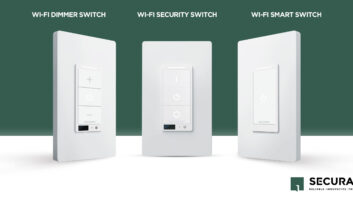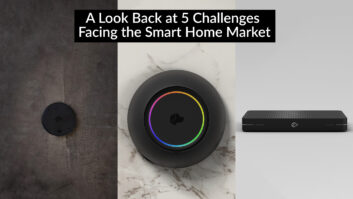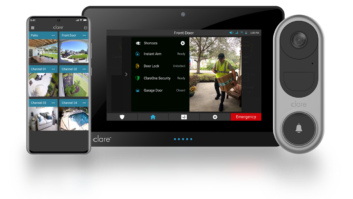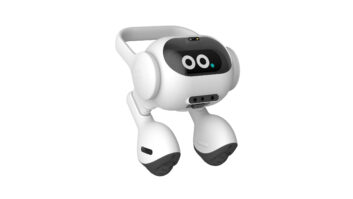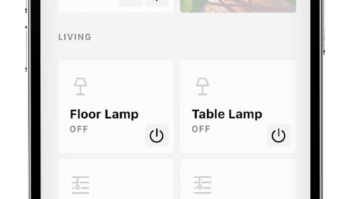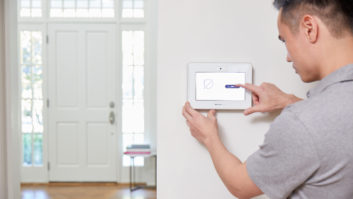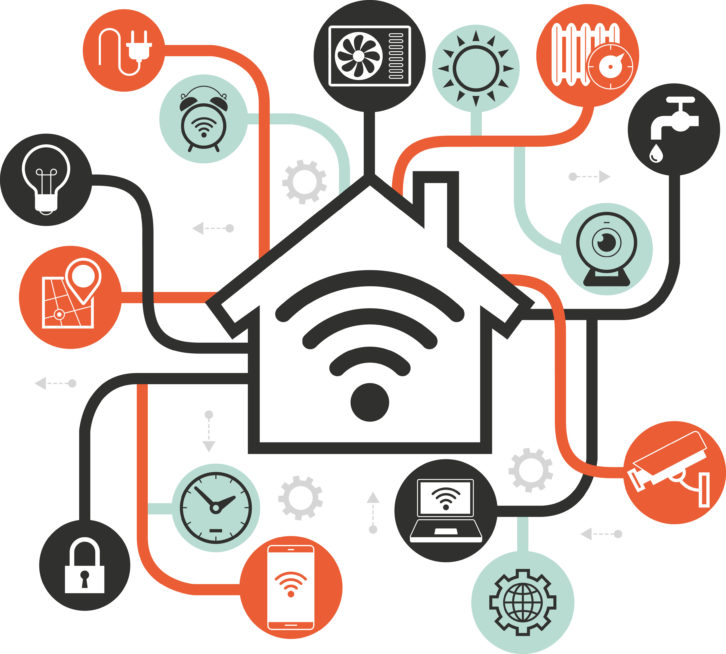
Just how private are voice-activated smart speakers? Just how secure is footage captured by Wi-Fi cameras? Just how compatible — and smart — are smart home products?
These are just a few questions retailers trying to sell fancy new smart home products face from consumers on the sales floor.
Retailers don’t need a smart smoke detector to detect just how hot the smart home category is. ABI Research says the smart home device market will be worth nearly $12 billion this year, more than doubling to $24.8 billion by 2024. But while manufacturers and retailers may be familiar with smart home technologies, many consumers are IoT neophytes, often just looking to solve one or two short-term issues.
“Our research is showing that it’s still a very do-it-yourself market, and most consumers are turning to smart home devices to address discrete or single needs,” explains Adam Wright, IDC senior research analyst. “That journey usually begins with networked entertainment devices — smart TVs, connected gaming consoles, connected DVD/Blu-ray players and set-top boxes, and streaming sticks, then the next step is usually smart home security/monitoring, so things like connected cameras for indoor/outdoor use, window and door sensors, etc., and then other things that add comfort and convenience and cost savings to the house — connected thermostats, connected light bulbs, connected cleaning robots, etc.”
Neophytes, of course, raise questions about problems they “hear about,” often a reaction to highly publicized reports of sensitive WiFi security camera footage being stolen or conversations nefariously captured by a voice-enabled smart speaker, that often present smart home device sales challenges to retailers.
Fortunately, retailers know most of these smart home security worries are overblown, but they often obscure more mundane installation and usage issues.
“There are a few people that worry about privacy and security, but not as many as you would think,” notes Kris Dybdahl, VP at San Antonio-based Bjorn’s Audio/Video. “We see spikes in questions when the media grabs hold of a big hacking story, but, unfortunately, the consumer, in general doesn’t bring it up as much as I think they should.”
“Certainly some consumers will have concerns about video camera security vulnerabilities or security/privacy issues across smart devices in the home,” agrees Jonathan Collins, research director at ABI Research. “That said, the vast majority of consumers are either comfortable with the security/privacy supported by devices and systems, or are at least comfortable enough given the price points and the usefulness of smart home systems to offset their concerns.”
But questions about security and privacy, especially the hoary myth that voice speakers are always listening and recording everything you say, do arise and do need to be addressed.
“If that question comes up, I show the customer how to turn off the microphone,” advises Chad Taylor, technology expert at Chicago-based Abt’s, “or, in most cases, I remind them they have a device listening all the time — their cell phone.”
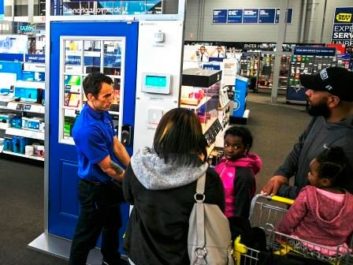
Working Together
While Wi-Fi security camera hacking and voice speaker eavesdropping seem sexier to discuss, retailers actually need to deal with more pedantic problems, such as smart home device compatibility. “The number one [smart home device issue] for us is customers wanting to know it’s going to work,” Bjorn’s Dybdahl insists.
Compatibility concerns “may have had more of an impact as consumers grapple with interoperability between existing devices and systems and new additions,” Collins observes. “Previously, curated suites of devices and services masked complexity for end users. As more and more smart home devices are marketed directly to consumers and have brand name recognition, consumers are tasked with ensuring interoperability between new and existing devices is supported.”
One predicted trend is finally coalescing to increasingly allay consumer compatibility concerns: the dominance of a handful of brand-name ecosystems — Amazon Alexa, Google Assistant, and, to a lesser extent, Apple HomeKit.
“Amazon plays nice/works with almost every device imaginable. Google is fairly similar. Apple is struggling and likely going to struggle for a long time until they change their approach because yes, they are a very closed ecosystem and have a restricted ecosystem of devices/partners,” explains IDC’s Wright.
“While any standardization remains distant, in the short term, major players are looking to provide a wide range of devices, with the same branding, to simplify interoperability concerns for both retailers and their customers,” ABI’s Collins adds.
Brand-name ecosystems also seem to be eliminating a pervasive smart home annoyance — hubs. “Hubs typically silo a customer quicker than anything else,” observes Abt’s Taylor. “There is enough great product out in the market that you can fill your entire home up and never need a hub.”
Even if assured of ecosystem compatibility, retailers also need to deal with technically awkward consumers attempting to navigate DIY installation and actual usage.
“Not everyone is comfortable taking down a thermostat, doorbell, or hard-wired flood light,” notes Taylor, which is why an increasing number of retailers such as Abt’s offer smart home installation services.
Worthless Wireless
One aspect of the smart home selling process may be the most overlooked by both consumers and retailers: WiFi. Often, consumers are completely unaware of how powerful or far-reaching their WiFi is — or, more likely, isn’t —which often leads to an unsatisfactory installation and usage experience.
“We absolutely need to know what WiFi they have,” Dybdahl says. “In most cases, we insist they must have the minimums for proper use.”
Abt’s also identifies a consumer’s WiFi set-up “100 percent of the time,” Taylor echoes. “When you are talking with a customer about cameras that are showing up to 4K video, internet speed, and router performance is key.”
But not all retailers — and even fewer consumers — are as cognizant of potential WiFi issues.
“I suspect most retailers/salespeople don’t bother to inquire about the WiFi situation, and instead just want to push the sale of the device,” counters IDC’s Wright. “Amazon is super smart in this area, however, because they recognize that a good wireless network is key to a good user experience, that’s why they acquired Eero and we’ll soon see them push those products alongside their other products.”
Everyone agrees that active smart home device merchandising is the best way to overcome consumer concerns over security, privacy, compatibility, and WiFi.
“In-store demonstrations and displays are vital to selling smart home devices,” encourages IDC’s Wright. “They remove the complexity surrounding these devices and can enable salespeople to better demonstrate the ways in which devices can work with each other to bring about enhanced experiences.”
This story originally appeared on TWICE.com.
